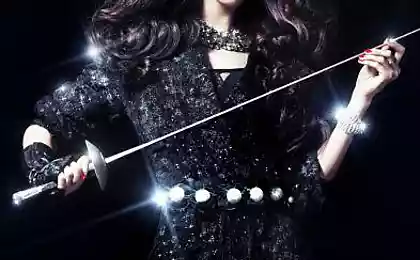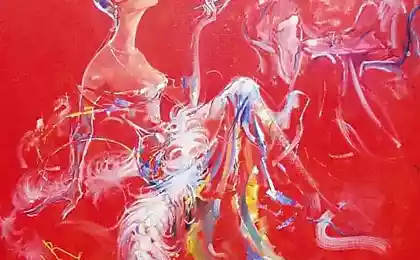1182
Do not believe your eyes: A Guide to Optical Illusions
All that you see - samoobmanPoprobuyte submit that the evolution of life on this planet has gone the other way and animals (including you and me) we were not able to get a feeling as vision. Does not work? No wonder - we have come to rely on their eyes that can not even imagine what would be the world without the optical component. Despite the importance of view, it is not so at all - for example, some combinations of signals are able to "outsmart" the brain (as is well known, "see", we neurons, not the eyes), forcing the person to be confused in the size of objects or to guess the "movement" in the static image . Now, attention! Sit back, "turn off" all of the senses other than vision and focus on the screen - will focus on optical illusions.
Classic optical illyuziiIstoriya optical illusions more than one thousand years, back in 350 BC, Aristotle wrote: "Our senses can be trusted, but they are still easily fooled." The great thinker said that if some time to look at the waterfall, and then translate the look on fixed hillside, it may seem as if the rocks are moving in the opposite direction of flow. Modern researchers call this optical phenomenon aftereffect illusion of movement or waterfall.
When we watch the water flow of the neurons in our brain adapts to the unidirectional movement of the light signals, resulting in looking after the falls on a static object, while we continue to "see" the movement, only in reverse.
The illusion of perception relative razmerov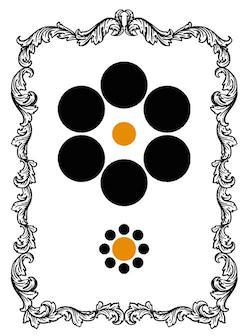
In the XIX-th century began intensive study of the properties and characteristics of the perception of the human senses. It was then that the researchers have developed optical illusions, which are now considered classics in the first place - Ebbinghaus illusion.
Even if you are not too interested in the history of psychology, it is probably familiar to you, look at the picture. Of course, you know that the size of orange circles are the same as those seen illusions thousand times, but his eyes are still lying to you - for a split second the feeling they are still different. The human brain determines the size of objects and images from the value of adjacent objects, and inevitably falls into the trap - on the background of large black circles orange seems smaller than near the small circles.
The illusion of perception glubiny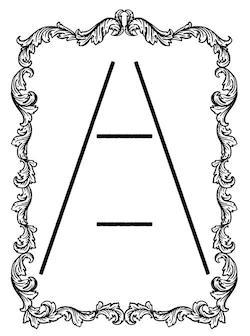
Italian psychologist Mario Ponzi at the beginning of XX-th century, one of the first scientists showed the world that the perception of object size affect not only related objects, but also the depth of the background. The Italian has developed a classic illusion that now bears his name.
Ponzo illusion is very simple - between the two oblique lines are two identical horizontal, while one of them is seen as a long. Sloping lines create perspective, the brain believes that the upper horizontal line is "farther" than the lower, and makes allowance for "distance" - and due to this there is a curious effect.
"Magic" line Mueller Layera
Another textbook optical illusion, which is over a hundred years - Müller-Lyer illusion. Its essence is also quite simple - the illustration shows the lines with arrows at the ends of the greater seems the one that framed the "tails" of arrows.
Scientists are still arguing about the mechanism of illusion, it is currently the most popular following treatment. Three converging lines the brain interprets as part of a three-dimensional object, with lines forming "spearhead" are perceived as closer object (say, a corner of the building when viewed from the outside). "Tail" of the arrow, in turn, creates the illusion of a remote object (the "corner of the room"). As in the case of the Ponzo illusion, the brain "offset distance" to the subject, resulting in a different line are seen.
Riddle Gelmgoltsa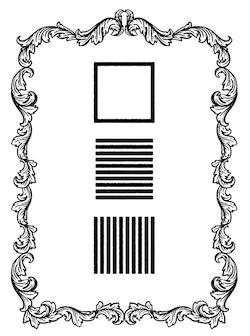
Surprises not only teaches the brain converging lines, and parallel vertical or horizontal. At the end of the XIX-th century German physicist and physiologist Hermann von Helmholtz showed that the horizontal lines of the square lined with looks wider and lower than the exact same, but made up of vertical lines.
Outdoor Helmholtz phenomenon is widely used in the manufacture of clothing, but contrary to popular belief, horizontal stripes on sweaters and dresses are not "complete", but strictly on the contrary - visually make the figure is already higher. The glossy fashion magazine frequent tips like: "Wear clothes with vertical stripes to look slimmer," but science is ruthlessly denies. Take a look at the Helmholtz illusion of yourself, make sure that the effect is directly opposite.
It should be noted that this optical illusion studied the length and breadth, but scientists are not yet able to reach consensus on the mechanisms of its occurrence.

Classic early illusions turned people's ideas about the world - as it turned out, "to believe his eyes," you can not always. Uyed Nicholas, a specialist on the history of optical illusions from the University of Dundee (Scotland) is confident that optical illusions have played a prominent role in the study of the properties of perception, "creating an illusion, scientists have realized that even an understanding of the mechanism of the eye does not give a complete picture of the nature of view." Wade noted that the pioneers of the development of optical illusions made attempts to unite them in a common theory, but they were unsuccessful. As later revealed, the reaction of the human brain on the optical illusion is much more complicated and diverse than was seen to researchers at the turn of the XIX-th and XX-th centuries.
Illusions in the XX-th vekeV "age of wars and revolutions" humanity has witnessed many breakthroughs in the understanding of the nature of optical illusions. Advances in science and technology have given professionals the opportunity to take another look at the issue. For example, experiments Torsten Wiesel and David Hubel proved that the perception of the different areas of the visual field correspond to different neurons - researchers for this discovery in 1981 was awarded the Nobel Prize for Medicine.

Later scientists for visual distortions come from the artists - in the 1950s there was a whole new trend in art, dedicated to optical illusions, it became known as op-art (from the English. Optical art - «optical art"). One of the founders of op art is considered to be a French painter and sculptor Victor Vasarely, his work is often cited as a prominent example of optical illusions.
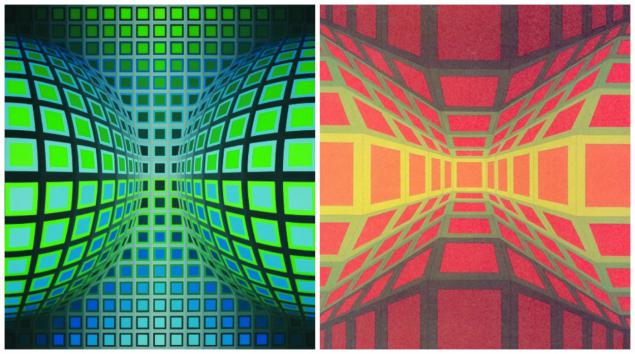


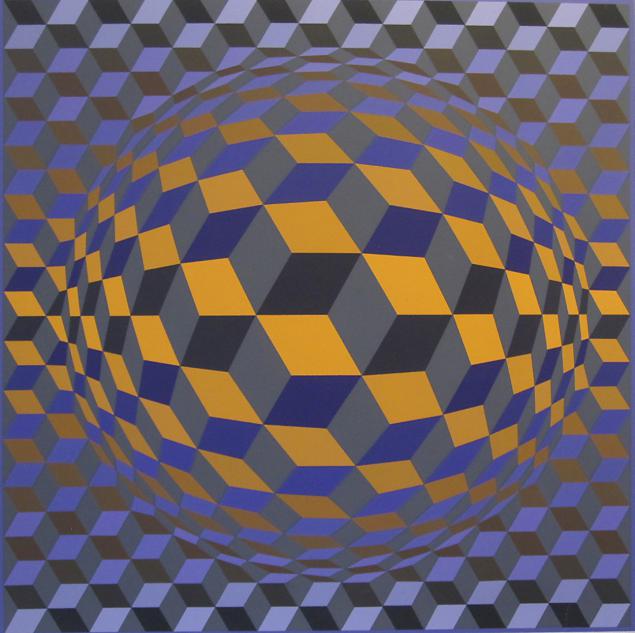
The illusions of our time early XXI-century interest in visual distortion continues to grow - there are new scientific theories with which scientists try to explain the mechanisms of optical illusions. According to one of these distortions are due to the fact that the human brain constantly "predicts" the image to compensate for the delay between the event itself and the time of its perception. For example - until you read this article, your brain processes visual signals received from the computer monitor or screen gadget. It takes some time, so you can see in some way not present and the past.
Neurobiologist Mark Changizi believes that it is the brain attempts to "anticipate" the picture explains some visual distortions.
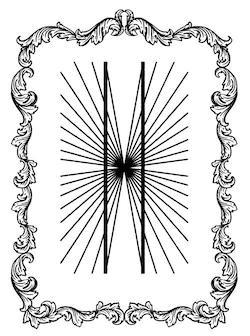
Experiments Changizi and his colleagues from the California Institute of Technology have shown that this theory does not contradict any one of the classic optical illusions. Among the most illustrative examples of "predictions" brain imaging Changizi calls the famous Hering illusion. When a person moves forward, they are visible objects move along radial lines, so the brain tends to perceive such images as a sign of moving in space. "These arrangements work well in real life, but they also cause the brain to make mistakes when one sees the radial line and still remains in place," - said the researcher.
Necker Cube and other "whims" mozga
The invention of magnetic resonance imaging has become a boon for researchers optical illusions - the science has finally been able at least in general terms, to understand what happens in the brain when their perception. Thus, studying the brain activity of man, staring at the Necker cube, the researchers concluded that the brain perceives depth ambiguous image. Neurons that "debate" among themselves, what the picture should be regarded as "true" as a result of the observer sees the cube one way or the other.
Likewise is the case with other known optical illusion - the so-called German grid. Take a look at the picture - side view, you "see" gray dots at the intersection of the white lines, but it is necessary to focus the mind on a "gray point", she immediately "disappear." According to one of the most popular among the scientists explain this phenomenon among the neurons there is a continuous "struggle" for the treatment of dark and light areas of the image that makes a man "ignore" flickering point.
The latest idea of modern methods of research illyuziyahBlagodarya mankind knows that the perception of shades of colors, shapes and objects moving in space correspond to different parts of the brain, but how do we get a holistic picture largely remains a mystery. Enthusiasts are developing more and more new ways to fool the eye, rethinking and complementing the classic illusion. Looking at them, we diligently "allow" their own brains mislead us, and as a result there are more questions than answers.
In our time, interest in the issue is so high that it has for ten years, experts hold annual competition for the best optical illusion. For example, in 2014 the award went to a dynamic Ebbinghaus illusion that deceives the eye is much more convincing than the classic static version. According to neuroscientist Suzanne Martinez-Conde, a member of the jury, due to the constant changes in the size of adjacent objects the effect of a new illusion is several times stronger than that of a still image, proposed by Hermann Ebbinghaus.
Martinez-Conde admits that most of the modern studies optical illusions based on the work done by scientists of the XIX-th century. For example, Hermann Helmholtz first to realize that human eyes constantly make quick concerted movement, the so-called saccades. To understand what I mean, close one eye and gently press your finger on the lower eyelid another - "picture" that your brain sees immediately come in motion. In ordinary life we do not notice these microscopic "twitching" because the brain long ago learned to smooth the image, but when faced with an unusual situation (mechanical impact on the eyeball), saccades show itself in all its glory.
According to Suzanne, that saccade play a key role in the well-known illusion of "Rotating snakes", developed by a Japanese psychiatrist Akioshi Kitaoka. In experiments with "Snakes" Martinez-Conde and her colleagues found that when looking at the illusion activates the same neurons that when viewed from the window of a fast-moving train, when it seems that the landscape "goes past", and not vice versa. However, if using some tricks to force the observer to stop saccade, the illusion disappears.

Neurologist explains it this way: the appearance of motion in "Rotating snakes" is created by a large number of optical information coming in different parts of the retina. A certain combination of light signals tricks the brain, causing it to take a static image as the dynamic. Saccades constantly updated "picture", not giving the brain to adapt to it, if they are suspended, after some time spent and the illusion of motion.
Like many other experts in optical illusions, Suzanne Martinez-Conde sure - not all mechanisms of visual perception are open, and those that are already known, is not well understood. This means only one thing - do not blindly believe their eyes, they have more than once deceived.
via factroom.ru
Classic optical illyuziiIstoriya optical illusions more than one thousand years, back in 350 BC, Aristotle wrote: "Our senses can be trusted, but they are still easily fooled." The great thinker said that if some time to look at the waterfall, and then translate the look on fixed hillside, it may seem as if the rocks are moving in the opposite direction of flow. Modern researchers call this optical phenomenon aftereffect illusion of movement or waterfall.
When we watch the water flow of the neurons in our brain adapts to the unidirectional movement of the light signals, resulting in looking after the falls on a static object, while we continue to "see" the movement, only in reverse.
The illusion of perception relative razmerov

In the XIX-th century began intensive study of the properties and characteristics of the perception of the human senses. It was then that the researchers have developed optical illusions, which are now considered classics in the first place - Ebbinghaus illusion.
Even if you are not too interested in the history of psychology, it is probably familiar to you, look at the picture. Of course, you know that the size of orange circles are the same as those seen illusions thousand times, but his eyes are still lying to you - for a split second the feeling they are still different. The human brain determines the size of objects and images from the value of adjacent objects, and inevitably falls into the trap - on the background of large black circles orange seems smaller than near the small circles.
The illusion of perception glubiny

Italian psychologist Mario Ponzi at the beginning of XX-th century, one of the first scientists showed the world that the perception of object size affect not only related objects, but also the depth of the background. The Italian has developed a classic illusion that now bears his name.
Ponzo illusion is very simple - between the two oblique lines are two identical horizontal, while one of them is seen as a long. Sloping lines create perspective, the brain believes that the upper horizontal line is "farther" than the lower, and makes allowance for "distance" - and due to this there is a curious effect.
"Magic" line Mueller Layera

Another textbook optical illusion, which is over a hundred years - Müller-Lyer illusion. Its essence is also quite simple - the illustration shows the lines with arrows at the ends of the greater seems the one that framed the "tails" of arrows.
Scientists are still arguing about the mechanism of illusion, it is currently the most popular following treatment. Three converging lines the brain interprets as part of a three-dimensional object, with lines forming "spearhead" are perceived as closer object (say, a corner of the building when viewed from the outside). "Tail" of the arrow, in turn, creates the illusion of a remote object (the "corner of the room"). As in the case of the Ponzo illusion, the brain "offset distance" to the subject, resulting in a different line are seen.
Riddle Gelmgoltsa

Surprises not only teaches the brain converging lines, and parallel vertical or horizontal. At the end of the XIX-th century German physicist and physiologist Hermann von Helmholtz showed that the horizontal lines of the square lined with looks wider and lower than the exact same, but made up of vertical lines.
Outdoor Helmholtz phenomenon is widely used in the manufacture of clothing, but contrary to popular belief, horizontal stripes on sweaters and dresses are not "complete", but strictly on the contrary - visually make the figure is already higher. The glossy fashion magazine frequent tips like: "Wear clothes with vertical stripes to look slimmer," but science is ruthlessly denies. Take a look at the Helmholtz illusion of yourself, make sure that the effect is directly opposite.
It should be noted that this optical illusion studied the length and breadth, but scientists are not yet able to reach consensus on the mechanisms of its occurrence.

Classic early illusions turned people's ideas about the world - as it turned out, "to believe his eyes," you can not always. Uyed Nicholas, a specialist on the history of optical illusions from the University of Dundee (Scotland) is confident that optical illusions have played a prominent role in the study of the properties of perception, "creating an illusion, scientists have realized that even an understanding of the mechanism of the eye does not give a complete picture of the nature of view." Wade noted that the pioneers of the development of optical illusions made attempts to unite them in a common theory, but they were unsuccessful. As later revealed, the reaction of the human brain on the optical illusion is much more complicated and diverse than was seen to researchers at the turn of the XIX-th and XX-th centuries.
Illusions in the XX-th vekeV "age of wars and revolutions" humanity has witnessed many breakthroughs in the understanding of the nature of optical illusions. Advances in science and technology have given professionals the opportunity to take another look at the issue. For example, experiments Torsten Wiesel and David Hubel proved that the perception of the different areas of the visual field correspond to different neurons - researchers for this discovery in 1981 was awarded the Nobel Prize for Medicine.

Later scientists for visual distortions come from the artists - in the 1950s there was a whole new trend in art, dedicated to optical illusions, it became known as op-art (from the English. Optical art - «optical art"). One of the founders of op art is considered to be a French painter and sculptor Victor Vasarely, his work is often cited as a prominent example of optical illusions.




The illusions of our time early XXI-century interest in visual distortion continues to grow - there are new scientific theories with which scientists try to explain the mechanisms of optical illusions. According to one of these distortions are due to the fact that the human brain constantly "predicts" the image to compensate for the delay between the event itself and the time of its perception. For example - until you read this article, your brain processes visual signals received from the computer monitor or screen gadget. It takes some time, so you can see in some way not present and the past.
Neurobiologist Mark Changizi believes that it is the brain attempts to "anticipate" the picture explains some visual distortions.

Experiments Changizi and his colleagues from the California Institute of Technology have shown that this theory does not contradict any one of the classic optical illusions. Among the most illustrative examples of "predictions" brain imaging Changizi calls the famous Hering illusion. When a person moves forward, they are visible objects move along radial lines, so the brain tends to perceive such images as a sign of moving in space. "These arrangements work well in real life, but they also cause the brain to make mistakes when one sees the radial line and still remains in place," - said the researcher.
Necker Cube and other "whims" mozga

The invention of magnetic resonance imaging has become a boon for researchers optical illusions - the science has finally been able at least in general terms, to understand what happens in the brain when their perception. Thus, studying the brain activity of man, staring at the Necker cube, the researchers concluded that the brain perceives depth ambiguous image. Neurons that "debate" among themselves, what the picture should be regarded as "true" as a result of the observer sees the cube one way or the other.
Likewise is the case with other known optical illusion - the so-called German grid. Take a look at the picture - side view, you "see" gray dots at the intersection of the white lines, but it is necessary to focus the mind on a "gray point", she immediately "disappear." According to one of the most popular among the scientists explain this phenomenon among the neurons there is a continuous "struggle" for the treatment of dark and light areas of the image that makes a man "ignore" flickering point.
The latest idea of modern methods of research illyuziyahBlagodarya mankind knows that the perception of shades of colors, shapes and objects moving in space correspond to different parts of the brain, but how do we get a holistic picture largely remains a mystery. Enthusiasts are developing more and more new ways to fool the eye, rethinking and complementing the classic illusion. Looking at them, we diligently "allow" their own brains mislead us, and as a result there are more questions than answers.
In our time, interest in the issue is so high that it has for ten years, experts hold annual competition for the best optical illusion. For example, in 2014 the award went to a dynamic Ebbinghaus illusion that deceives the eye is much more convincing than the classic static version. According to neuroscientist Suzanne Martinez-Conde, a member of the jury, due to the constant changes in the size of adjacent objects the effect of a new illusion is several times stronger than that of a still image, proposed by Hermann Ebbinghaus.
Martinez-Conde admits that most of the modern studies optical illusions based on the work done by scientists of the XIX-th century. For example, Hermann Helmholtz first to realize that human eyes constantly make quick concerted movement, the so-called saccades. To understand what I mean, close one eye and gently press your finger on the lower eyelid another - "picture" that your brain sees immediately come in motion. In ordinary life we do not notice these microscopic "twitching" because the brain long ago learned to smooth the image, but when faced with an unusual situation (mechanical impact on the eyeball), saccades show itself in all its glory.
According to Suzanne, that saccade play a key role in the well-known illusion of "Rotating snakes", developed by a Japanese psychiatrist Akioshi Kitaoka. In experiments with "Snakes" Martinez-Conde and her colleagues found that when looking at the illusion activates the same neurons that when viewed from the window of a fast-moving train, when it seems that the landscape "goes past", and not vice versa. However, if using some tricks to force the observer to stop saccade, the illusion disappears.

Neurologist explains it this way: the appearance of motion in "Rotating snakes" is created by a large number of optical information coming in different parts of the retina. A certain combination of light signals tricks the brain, causing it to take a static image as the dynamic. Saccades constantly updated "picture", not giving the brain to adapt to it, if they are suspended, after some time spent and the illusion of motion.
Like many other experts in optical illusions, Suzanne Martinez-Conde sure - not all mechanisms of visual perception are open, and those that are already known, is not well understood. This means only one thing - do not blindly believe their eyes, they have more than once deceived.
via factroom.ru
The plot of the novel "1984" dystopia borrowed from Yevgeny Zamyatin "We"
We should expand the definition of "human being"


